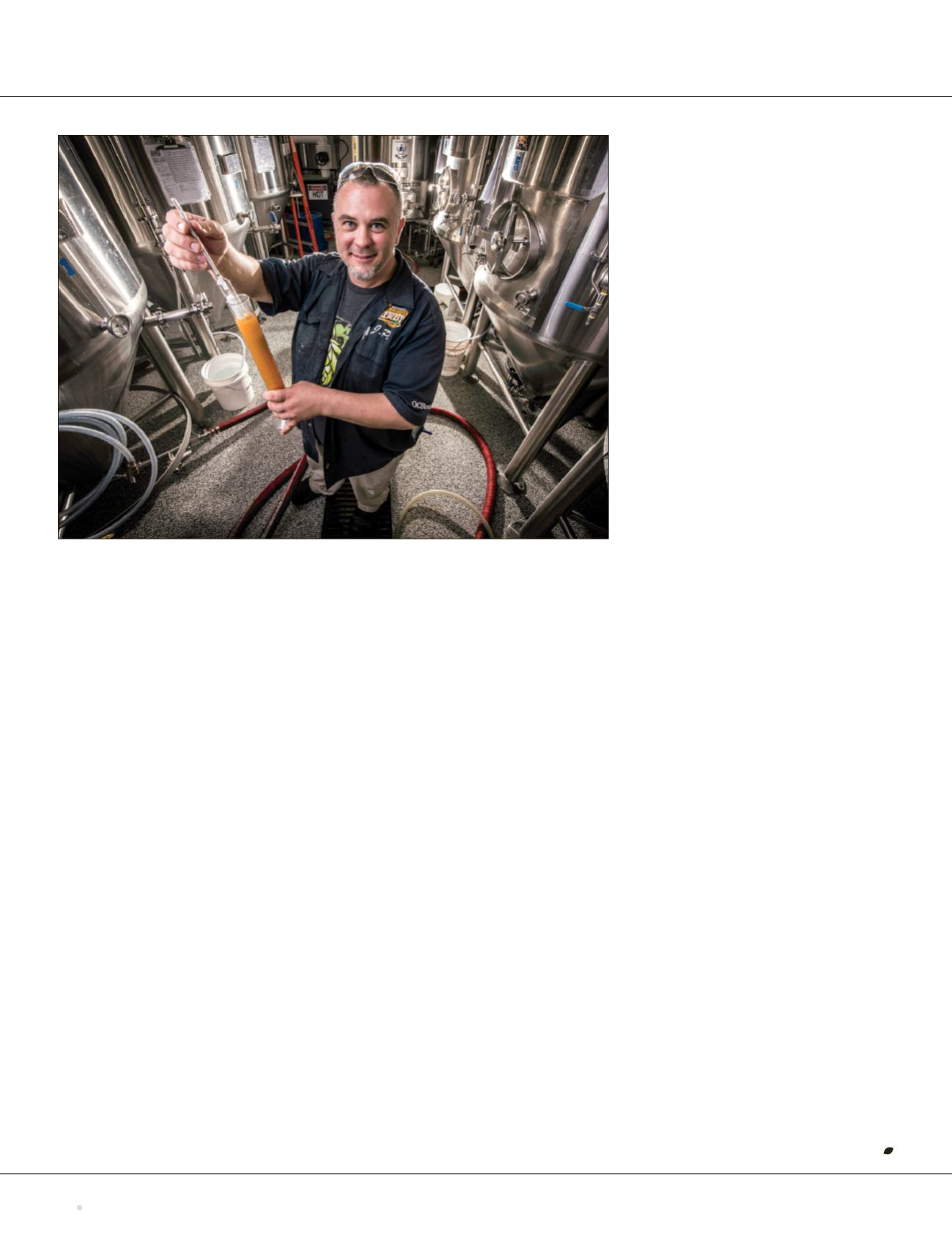

ingredients [here at the brewery]. For
example, we’ve used Red Shed Malting’s
malt in our beers. I don’t think that there’s
the same opportunity to use local prod-
ucts in Niagara [where the brewmaster
program is also taught at Niagara College],
for example—at least for barley.
GW
: What were some of the highlights
for you from the two-year brewmaster
program?
JP:
We did a trip to the Yakima Valley
in Washington to see the hop harvest. I
remember this was the first time I’d ever
seen hops harvested on an industrial
scale. To smell the fresh harvested hops,
to visit the breweries that are in those hop
fields and that use the hops right from
those fields—it’s a unique experience.
Everybody who goes on that trip to the
Yakima Valley always comes back with a
huge smile on their face. Students in the
program still go every September.
GW:
Did any other aspect of the
brewmaster program really stand out
for you?
JP:
I loved the science courses. Even
though I have a science background, I’d
say getting the brewing science back-
ground from the program was the most
crucial to my future.
GW:
You finished the program in the
spring of 2015. Then what?
JP:
Well, right after that my daughter was
born, so I took the summer off to help
my wife. After that, I came back to work
at the retail portion of the Olds College
Brewery. I was talking to people and sell-
ing them beer and giving them tastings. I
found that to be an important part of the
process. It’s great getting direct feedback
from consumers about our beer.
GW:
When you were promoted to the
role of head brewmaster in January
2017, did you go straight from brewery
retail to the top job?
JP:
Not exactly. Even though I was work-
ing in retail, I helped out a lot in the back.
I was an assistant brewer as a student.
GW:
Even though the brewmaster
program and brewery at Olds College
are only a few years old, you’re already
following in the footsteps of two ex-
tremely talented brewers.
JP:
I am, yes. Larry Kerwin, whom I’d call
a “grand brewmaster” and who was one of
the partners who started Village Brewery,
was contracted to be our brewmaster in
the beginning when I was a student. Then
there was Dave Mozel, our brewmaster
for two years. I worked closely with him
when I was assistant brewer.
GW:
What does the head brewmaster
job entail?
JP:
There’s a lot of lab work, quality control
and microscope work. Then overseeing the
students every day, because they’re bring-
ing beer to market and have questions.
As brewmaster, I also oversee all of the
beers that are produced in the brewery.
We have four core beers and we have ro-
tating seasonals, too. We do special beers,
like a Christmas beer and the Alberta
Beer Festivals beer. And I have to make
sure the students are doing everything
properly when they’re brewing, like
checking their mash chemistries and their
extracts, for example.
GW:
As a lover of craft brewing, you
must be excited by all the new craft
breweries opening in Alberta right now.
JP:
I love it. I love being able to walk
into my favourite liquor store and find
something new on the shelf almost every
time I go in. There’s some great brewing
happening in Alberta right now at brew-
eries like Common Crown Brewing Co.,
Bench Creek Brewing and Troubled Monk
Brewing. Last Best Brewing & Distilling is
making some great stuff, too.
GW:
You call yourself a “beer tourist.”
What does that mean?
JP:
Wherever I go, I’m looking for the
local beer. I think my favourite beer
experience so far was the Saint James’s
Gate Brewery in Dublin for the Guinness
tour. The Guinness itself in Ireland is
different—it’s got a sour twang to it that
exported Guinness doesn’t quite have.
GW:
Where is the next place you want
to visit as a “beer tourist?”
JP:
Belgium is on the top of my list be-
cause there are 400 styles of beer there.
Jason “JP” Popesku brings a wealth of scientific knowledge to the role of head brewmaster. He holds a master’s
degree in microbial biotechnology and fermentation science, and a PhD in molecular neuroendocrinology.
The Food Issue
2017
Grains
West
22









